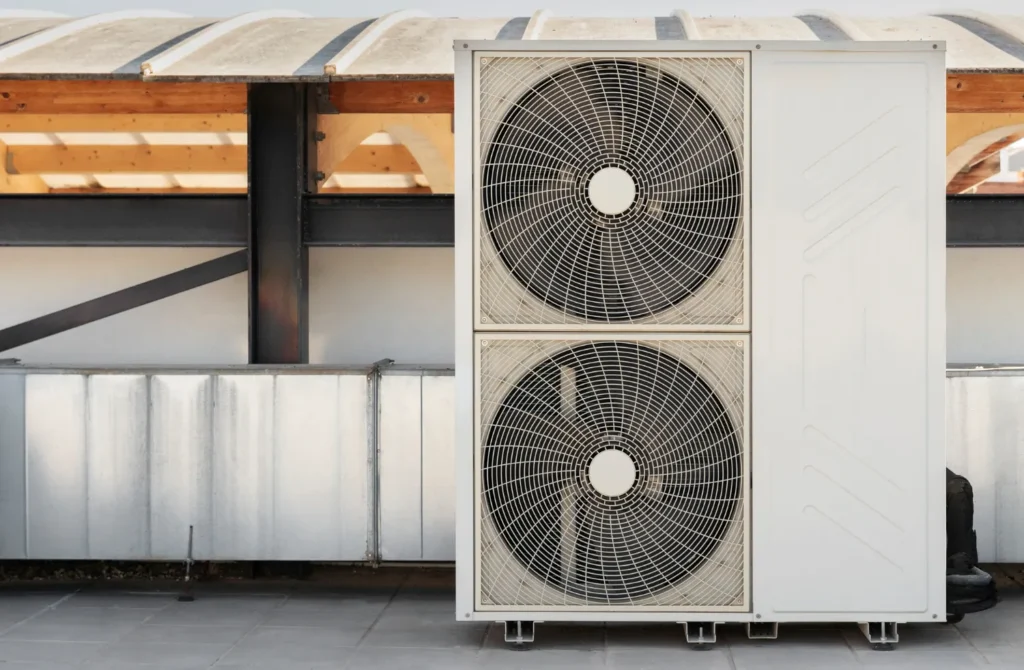Air conditioning is an essential technology that provides comfort in our homes and workplaces, especially during hot weather. It works by removing heat and humidity from indoor air, thereby cooling and dehumidifying it. In this article, we will delve into the components of an air conditioning system and How Does Air Conditioning Work together to achieve this cooling effect.
Table of Contents
How Components Of Air Conditioning Works

The Air Conditioning Evaporator Coil
The evaporator is a crucial component of an air conditioning systems. Located inside the indoor unit, it consists of a series of coils filled with refrigerant. As warm air from the room passes over these coils, the refrigerant absorbs the heat, causing it to evaporate and cool the air. The cooled air is then circulated back into the room while the now gaseous refrigerant moves on to the next component, the compressor.
The Air Conditioning Compressor
The compressor, often considered the heart of the air conditioning system, is responsible for increasing the pressure and temperature of the gaseous refrigerant. This process is vital because it prepares the refrigerant to release the absorbed heat. The compressor is usually located in the outdoor unit and plays a pivotal role in the refrigeration cycle.
The Air Conditioning Condenser Coil
Following the compressor, the refrigerant travels to the condenser. Also located in the outdoor unit, the condenser is equipped with coils and a fan. As the high-pressure, hot refrigerant passes through the condenser coils, the fan blows outdoor air over them.
This helps dissipate the heat from the refrigerant, which condenses back into a liquid form. The heat released is expelled outside while the cooled refrigerant proceeds to the expansion valve, ready to repeat the cycle.
Types of Air Conditioners

Split-System Air Conditioner
Split-system air conditioner’s are among the most common types of cooling systems in residential and small commercial buildings. They consist of two main components: an outdoor unit containing the compressor and condenser and an indoor unit housing the evaporator coil and air handler. This setup allows for efficient cooling, as the indoor unit can be installed in the area that requires cooling. In contrast, the outdoor unit can be placed in a less obtrusive location.
Packaged Air Conditioner
Packaged air conditioners are designed for buildings or homes without adequate space for a split system’s indoor unit. In a packaged system, all components, including the compressor, condenser, evaporator, and air handler, are housed in a single unit.
This unit is typically installed on the roof or a concrete slab near the building’s foundation. Packaged air conditioners are commonly used in commercial settings. However, they can also be found in residential applications, especially in mobile homes.
Ductless Air Conditioner
Ductless air conditioners, also known as mini-split systems, offer a flexible and efficient alternative to traditional systems. These systems consist of an outdoor unit connected to one or more indoor units via a small conduit that houses the power cable, refrigerant tubing, and condensate drain.
Ductless systems are ideal for retrofitting older buildings without existing ductwork, room additions, or areas where installing ductwork is impractical. They provide individual temperature control for each room or zone, making them energy-efficient and customizable.
Each type of air conditioner has its advantages and is suited to different environments and needs. Understanding these differences can help you choose the right system for your home or business. If you have any questions or need assistance in selecting or maintaining your air conditioning system, feel free to contact 75 Degree AC at (713)-598-2737 or email us at 75degreeacservices@gmail.com.
FAQs About How Does Air Conditioning Work
How does an air conditioner work step by step?
Here’s How does an air conditioner works step by step:-
- Thermostat Setting: The process begins when you set the thermostat to your desired temperature.
- Air Circulation: The indoor unit’s fan pulls warm air from the room and passes it over the evaporator coil.
- Heat Absorption: The refrigerant in the evaporator coil absorbs heat from the air, cooling it down.
- Refrigerant Compression: The now warm refrigerant gas is compressed by the compressor, increasing its temperature and pressure.
- Heat Release: The hot, pressurized refrigerant moves to the condenser coil in the outdoor unit, where it releases the absorbed heat to the outside air.
- Refrigerant Cooling: The refrigerant cools down and turns back into a liquid as it loses heat.
- Expansion and Cooling: The liquid refrigerant passes through the expansion valve, reducing its pressure and temperature and making it ready to absorb heat again.
- Repeat Cycle: The process repeats, keeping your home cool and comfortable.
How does AC really work?
Air conditioning works based on the principles of refrigeration. It uses a refrigerant, a substance that can easily absorb and release heat. The AC system circulates this refrigerant through a closed loop, allowing it to absorb heat from the indoor air and release it outside. This cycle of heat absorption and release, driven by components like the compressor and evaporator, cools and dehumidifies the indoor air.
Do air conditioners take in air from outside?
No, most air conditioners do not take in air from outside. They recirculate and cool the indoor air. However, some systems, particularly those in commercial buildings, may have a fresh air intake feature to improve ventilation and indoor air quality.
Why is my AC running but not cooling?
Several reasons could cause your AC to run without cooling effectively:
- Dirty Air Filter: A clogged filter restricts airflow, reducing the system’s efficiency.
- Low Refrigerant: Leaks in the system can cause refrigerant levels to drop, impairing its cooling ability.
- Faulty Compressor: The compressor is crucial for refrigerant circulation; if it’s malfunctioning, cooling will be affected.
- Thermostat Issues: Incorrect thermostat settings or malfunctions can prevent proper cooling.
- Dirty Coils: Dirt on the evaporator or condenser coils can hinder heat exchange, reducing cooling capacity.
If you’re experiencing issues with your air conditioning system, it’s essential to consult with a professional. At 75 Degree AC, our expert technicians can diagnose and resolve any AC problems, ensuring your system runs efficiently and effectively. Contact us at (713)-598-2737 or email 75degreeacservices@gmail.com for assistance.
Conclusion
Understanding how does air conditioning work and the different types available can help you make informed decisions about your cooling needs. Whether you’re considering a split-system, packaged, or ductless air conditioner, each has its unique advantages to suit different spaces and requirements.
Regular maintenance and addressing any issues promptly are vital to ensuring your air conditioning system operates efficiently and effectively. If you have any questions or need professional assistance, 75 Degree AC is here to help. Our experienced technicians are dedicated to providing top-quality service and ensuring your comfort.
For expert advice, installation, or repair services, don’t hesitate to contact us at (713)-598-2737 or email 75degreeacservices@gmail.com. Let us help you keep your home or business cool and comfortable all year round.




